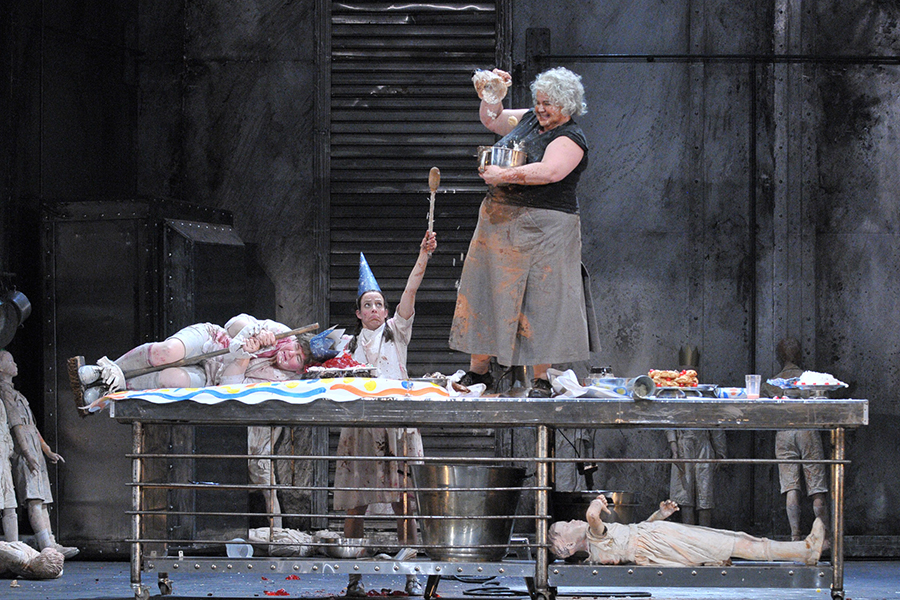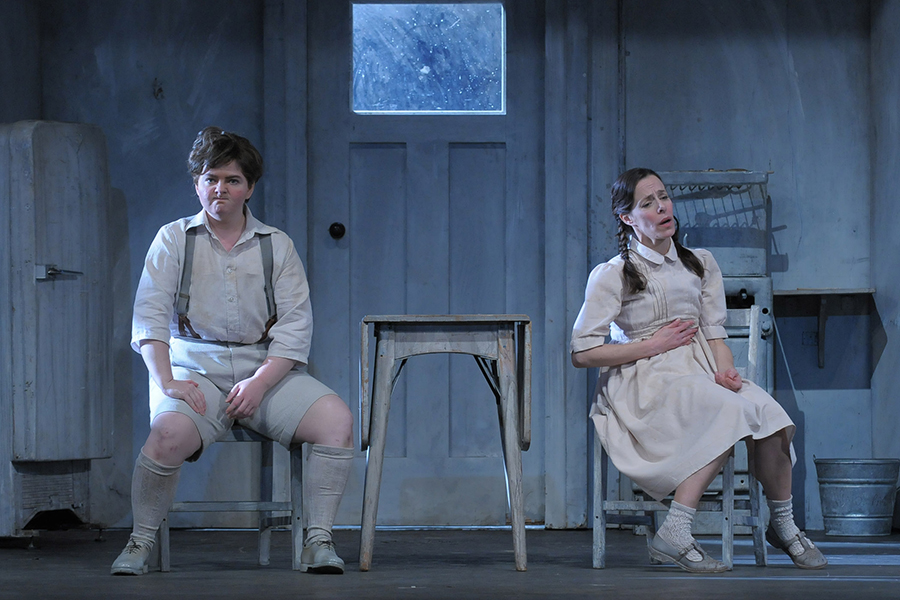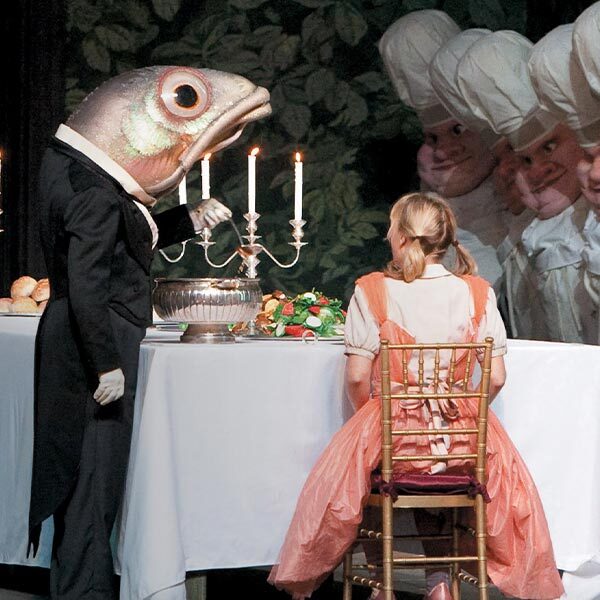January 05, 2023
Another world
Humperdinck deployed all the Wagnerian tricks to create an enduring fairy tale.
In May of 1890, Mascagni's Cavalleria Rusticana had its premiere in Rome. Two years later, Leoncavallo's Pagliacci followed in Milan. Separately, or in double harness, these two pieces swept the opera houses of the world. Inflamed passions, violence, and verismo filled the lyric stage.
And then, two days before Christmas 1893, there appeared an alternative: Engelbert Humperdinck's Hansel and Gretel. As the influential music critic of the time, Eduard Hanslick, put it: "To the brutal miniatures, already becoming tiresome, the strongest possible contrast is — a children's fairy tale. On the one side we have criminals, suicides, betrayed lovers and couples; on the other, a little brother and sister whose only pain is hunger and whose greatest pleasure is a candy bar — no passion, no love story, no love intrigue. It is another world — and a better one."

Elizabeth DeShong (Hansel) and Maria Kanyova (Gretel) with Jill Grove as the Witch in Hansel and Gretel at Lyric Opera of Chicago in 2012/13.
Ironically, as Hanslick realized, this innocent tale was composed by a musician under the spell of the arch-sorcerer Richard Wagner, who, Hanslick believed, had poisoned the pure fonts of lyric art. A thorough command of Wagner's technical apparatus underlies Hansel and Gretel. "The restless modulation...the polyphonic texture of the accompaniment...the refined orchestral effects — this is Richard Wagner to the core," wrote Hanslick. Humperdinck, a brilliant, prizewinning young musician of 25, met Wagner in Naples in 1879. Wagner invited him to Bayreuth to help in the preparation of Parsifal, and a few measures of that score have been ascribed to Humperdinck. (The transformation scene took slightly longer to stage than there was music for; the assistant devised some extra measures, and Wagner approved of them.) In 1880 he wrote an orchestral piece, Humoreske, which had a certain success. But he was not a prolific composer. After Bayreuth, he held various teaching posts, including two years as a professor of theory at the Barcelona Conservatory, and in 1890 Cosima Wagner engaged him to complete the musical education of her son Siegfried. That same year, Humperdinck's sister, Adelheid Wette, asked him to compose some songs for a domestic entertainment she had written for her children to perform.
With mock-Wagnerian pomposity this little drawing-room play was presented as "A Nursery Dedicatory Festival Drama." (Parsifal had been a "Bühnenweihfestspiel"; Hansel was a "Kinderstuben-Weihfestspiel.") Now Humperdinck was looking for an opera libretto, and it occurred to him that his sister's play could be expanded to provide one. Thus Hansel and Gretel came into being. Fairy tales, as everyone knows, can be allegories of real life. The Magic Flute is a fairy tale, and so is Die Frau ohne Schatten. (The Ring, for that matter, has episodes in common with Puss-in-Boots and The Sleeping Beauty.) The Grimm fairy tale on which Hansel and Gretel is based starts in a starkly realistic vein: "Times were hard. Work was scarce and food prices were high." So, in order to have two mouths less to feed, Hansel and Gretel are taken out into the woods and abandoned there.
The gentle Adelheid Wette was shocked at such callous behavior and tried to soften it. In her version the mother comes home after a tiring and profitless day. The children have been larking, not working. When, in a scuffle, the milk jug is broken and the only nourishment in the house is spilt, she drives them out into the forest to gather strawberries in a sudden, understandable burst of temper and despair. In its own way, this first scene is also very realistic, and there is more than a hint that the father, even though (or because!) his day has been profitable, has been drinking on the way home. Poverty, hunger, cares that have turned a mother's love to harshness — all is set for a domestic tragedy. But then Hansel and Gretel becomes an epic. Food may be a recurrent preoccupation — for the parents, for the children, for the greedy old child-eating Witch — but the theme is the outwitting of an ogress by two resourceful and spirited children. The Witch who has transformed her earlier little victims into gingerbread is a homely descendant of the enchantress Circe in The Odyssey, who turned Ulysses's companions into swine, and of the enchantress Alcina in Ariosto's Orlando Furioso, who turned her admirers into savage beasts. Many morals can be drawn from Hansel and Gretel — but not, perhaps, the one that is sung out, maestoso, in its closing pages: "When in need or dark despair, God will surely hear our prayer." The broad chorale makes a superb and moving musical close to the work — but heaven has played no part in the rescue of Hansel and Gretel or the awakening of the spellbound children. They are saved by their own wits.

Elizabeth DeShong (Hansel) and Maria Kanyova (Gretel) in Hansel and Gretel at Lyric Opera of Chicago in 2012/13.
In fact, heaven's role is distinctly ambiguous. At the close of the forest scene, the pious tots sing their evening prayer before settling down to sleep. Fourteen angels appear to keep watch over them, and Humperdinck clothes the Dream Pantomime in music of shining, ethereal beauty. But when day dawns, the angel sentries are gone. They were as a dream. The children are left to face the menace of the Witch. Hansel and Gretel is a Wagnerian music drama with nursery subject matter. When the milk jug is broken, the orchestral climax could accompany the shattering of Wotan's spear. The Witch's Ride is a Ride of the Valkyries, but with broomsticks for mounts, instead of magic horses. The shining Dream Pantomime owes something to Lohengrin, and perhaps more to Parsifal. The finale, the awakening of the children, is in effect an apotheosis and redemption. There have been people disturbed by, and critical of, the application of Wagner's elaborate methods to so slight a tale. But most people have loved Hansel and Gretel — loved it as children, and loved it perhaps even more as adults.
And they do so for two reasons. First, because they can still share in the realities of its emotions. (The forest terrors that scare Gretel, in the second scene, are kin to those that scare Mime in the Ring; anyone who has been alone in a forest at night must know them.)
And second, because the music is so captivatingly beautiful. Humperdinck uses the same size orchestra as Wagner in Die Meistersinger, but there is no heaviness in his handling of it — only richness, warmth, delicacy, and (to quote the critic Robin Legge) "once or twice, as in the twilit woodland scene with the cuckoo, a poetry more enchanting than anything of the kind ever achieved by Wagner."
Andrew Porter was a prominent British music critic and scholar.

